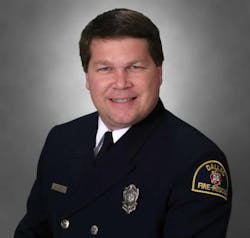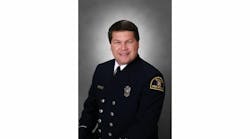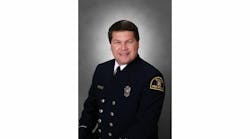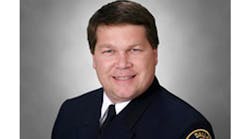Dallas Needs Funds for Changes Following LODD Probe
Source Dallas Morning News
After a line-of-duty death investigation criticized Dallas Fire-Rescue commanders and tactics last year, Chief Louie Bright III organized an internal committee with a major goal: “ensure that the death of Stanley Wilson is not in vain.”
Now, its fix-it plan, issued late last year, is drawing fresh scrutiny as fire officials try to get the city on board.
From the outside, two North Texas fire chiefs criticized the plan as so basic that it appeared someone had fallen “asleep at the wheel” at the department over the past decade.
Department leaders and firefighter groups have defended the proposals as “common sense” improvements. But there’s worry that some committee recommendations will fall by the wayside in a city that fought over public safety dollars last year.
“We’re not reinventing the wheel on any of these items,” said Doug Dickerson, president of the Dallas Fire Fighters Association, the largest firefighters group. “We’re not doing some new, innovative things here. We are just not doing the most effective job we could be doing.”
Dickerson said he wants all of the ideas — which center on a significant boost in training, technology upgrades and a few safety initiatives — now, not later. The cost of $5 million to $7 million is a small price to prevent another firefighter’s from being injured or killed, Dickerson and others say.
Yet coming up with the money is easier said than done, city officials say. City Manager A.C. Gonzalez said last week that the recommendations are sound. But he said some of them might have to wait until October, when the next budget year starts, unless fire officials can find the dollars right away.
“Any ideas for making that all happen within the department’s current budget would be greatly appreciated,” he said.
Committee members say they have talked to City Council members and are willing to work with them and others to find a way to pay for the improvements.
The recommendations came after three investigations — local, state and federal — into Wilson’s death while fighting a six-alarm fire May 20, 2013. The reports found numerous tactical blunders and deficiencies in the department’s operations. A draft version of the local report also cited a “cultural indifference” to procedures and training.
The reports showered blame on Deputy Chief Bobby Ross, the incident commander, for not controlling the scene and for giving an order that led to Wilson’s death when the building collapsed on him. Ross, who recently retired, disputed surviving firefighters’ accounts that he told them to go inside the building well after it was safe to do so.
Committee members — two assistant chiefs, two deputy chiefs, a section chief, three captains and two lieutenants — asked for a fire command simulator that will put fire officers through realistic command scenarios. And they want to double the size of their training staff for veteran firefighters.
Committee members consulted with former Dallas Chief Steve Abraira and other national experts. They reviewed the structures of other large urban fire departments.
The panel proposed that firefighters promoted to lieutenant go through 40 hours of initial officer training. Everyone at the lieutenant level and above would also receive 20 hours of annual refresher training.
“Nearly all of these are common sense,” said Capt. Scott Clumpner, a committee member and vice president of the Dallas Fire Fighters Association.
The department offered only sporadic, ad hoc and on-the-job training for low-level commanders, such as lieutenants and captains. Deputy chiefs, like Ross, are appointed and don’t receive additional training even though they could end up at the helm at the biggest fire scenes.
The training gap isn’t new. Clumpner said firefighting operations training has stagnated over the years. Deputy Chief Daniel DeYear, who wrote the line-of-duty death report on Wilson, previously wrote a thesis exploring the need for a Dallas Fire-Rescue officer development program.
Another committee member, Lt. Cristian Hinojosa, said his rank historically has been an apprenticeship.
“But with less on-the-job experience for critical incidents, we are facing an experience vacuum that can only be fulfilled with a more robust training program,” said Hinojosa, president of the Dallas Hispanic Fire Fighters Association.
Hinojosa said he believes consistent paramedic training on the “rescue” side of the house — an average of dozens of hours the state requires annually — has paid off and led to better survival rates for CPR.
“If you had the amount of continuing education for your fire officer that you have for your paramedic every year, it’d be revolutionary,” he said.
But because of the nature of the job — firefighters work a full 24-hour shift on call at a station once every three days — scheduling training sessions could be a challenge. Some may have to come in on their days off and earn overtime.
Experts say the investments are sorely needed and wondered what took so long.
Former Plano Fire Chief Bill Peterson said the recommendations — which he called basic — are akin to “putting a Band-Aid on a festering wound.”
Former longtime Lewisville Fire Chief Rick Lasky said the Dallas recommendations are solid but overdue.
“I'll be honest, a lot of those moves should have been done a long time ago,” he said. “Someone fell asleep at the wheel.”
Capt. Delridge Williams, a committee member, defended the panel’s suggestions and said the criticisms by ex-leaders of smaller departments isn’t fair. He said that the Dallas fire service changes rapidly and that there is more than one way to do things.
“It’s very unfair to criticize and play Monday morning quarterback and say, ‘Man, you should have been doing this,’ especially if what you’re doing works,” he said. “At any organization, change is difficult. And as we manage change, we grow from it.”
The price tag for the proposals — though small in a city with a $2.8 billion budget — looms large. City officials also tried to trim the public safety portion of the budget last year, prompting a big squabble over only a few million dollars in cuts.
The changes could be implemented piecemeal. And Dallas Fire-Rescue’s spokesman, Lt. Joel Lavender, also said the department might look at ways to cut costs, such as offering some of the proposed training online.
“We’re looking at creative ways to make sure we take care of this training,” Lavender said.
Some of the ideas already are in the works. The department is trying out a gadget that records fire ground communications for training and investigative purposes.
Other proposals, such as the creation of six new officer positions dedicated entirely to ensuring safety at multiple-alarm fire scenes and promoting a safer culture, could prove more cost-prohibitive.
No matter, committee members say.
“My take on that is: how much is a firefighter’s life worth?” Williams said.
AT A GLANCE: Report’s recommendations
—Quarterly National Fire Academy command courses
— A second computer in the back of the chiefs’ cars, where they are commanding the scene.
—Six new incident safety officer positions
—An in-house command simulator
—Extensive initial and ongoing training for commanders
—Recording fire ground communication
—More IT analysts
—A dispatcher dedicated to an incident and a formalized checklist
—A checklist for chiefs to ensure they keep track of the scene
———
©2015 The Dallas Morning News
Visit The Dallas Morning News at www.dallasnews.com
Distributed by Tribune Content Agency, LLC









